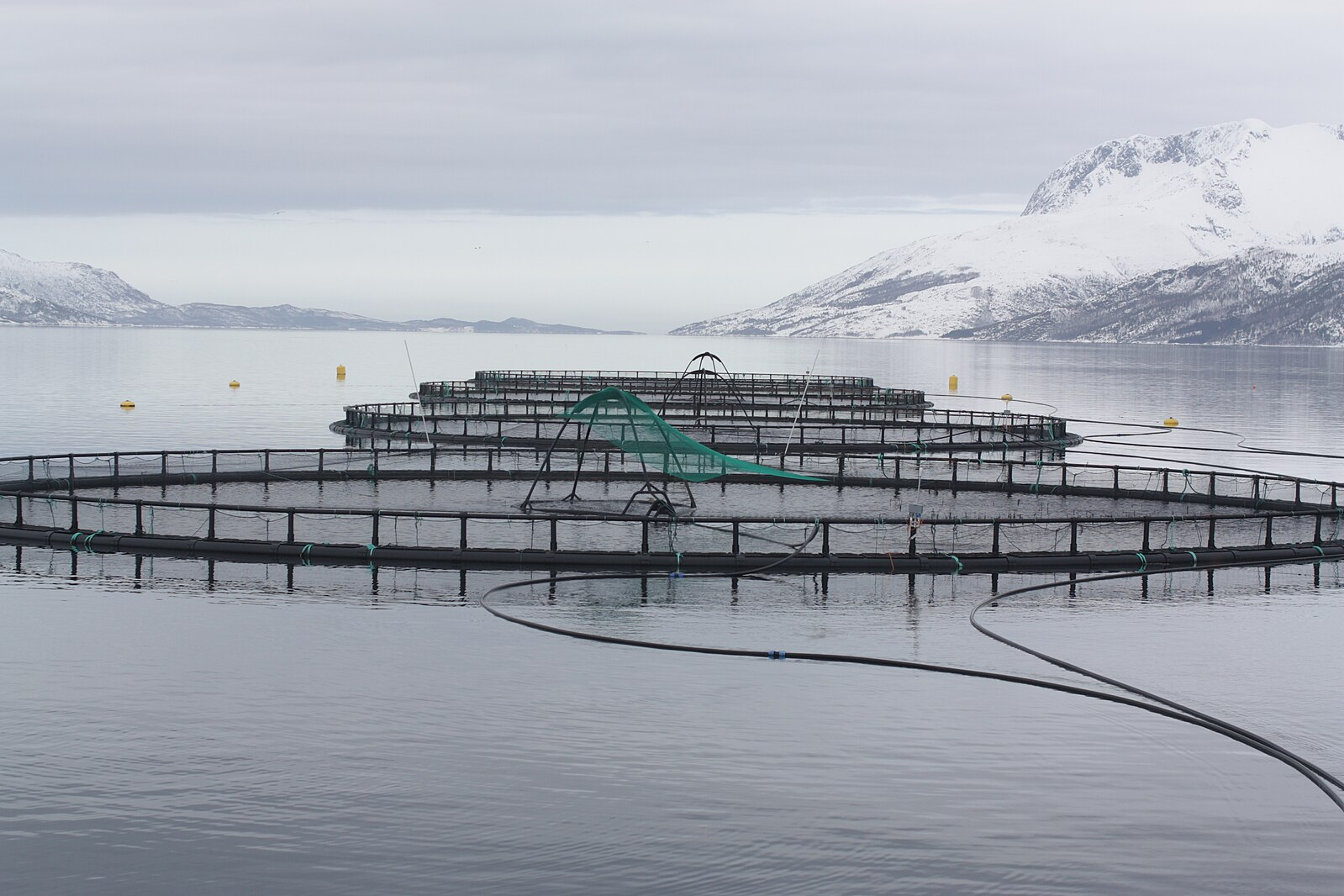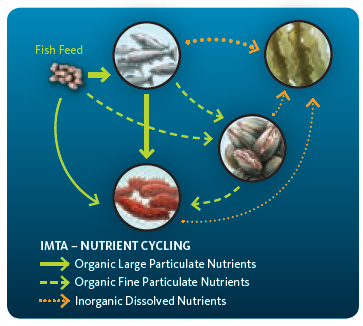IB Syllabus focus:
‘Aquaculture expands supply but can cause habitat loss, pollution, disease spread and escapes. Manage with better feeds, waste control, careful siting, polyculture and biosecurity.’
Aquaculture has grown rapidly to meet rising demand for aquatic food, offering opportunities for sustainable production but also creating environmental, ecological, and management challenges worldwide.
Growth of Aquaculture
Aquaculture refers to the farming of aquatic organisms, including fish, crustaceans, molluscs, and aquatic plants, under controlled conditions. It is now one of the fastest-growing food production sectors.
Drivers of Expansion
The growth of aquaculture has been driven by:
Rising global demand for fish protein due to population growth and dietary shifts.
Overexploitation of wild fisheries, making farming a necessary alternative.
Technological advancements in breeding, disease control, and feed production.
Economic benefits, such as employment opportunities and food security in coastal and rural areas.
Impacts of Aquaculture
While aquaculture boosts supply, it also introduces ecological and social impacts.
Habitat Loss
Aquaculture development can lead to habitat destruction.
Conversion of mangroves and wetlands into fish or shrimp ponds reduces biodiversity.
Coastal developments alter natural hydrological flows and ecosystem services.
Habitat Loss: The destruction or alteration of ecosystems that support species, often reducing biodiversity and natural resilience.
Pollution
Pollution arises when waste and chemicals from aquaculture enter surrounding waters.
Nutrient loading from uneaten feed and fish waste causes eutrophication.
Use of antibiotics and pesticides contributes to chemical pollution and resistant pathogens.
Effluents alter oxygen levels, harming nearby organisms.
Disease Spread and Escapes
Disease outbreaks are common in intensive aquaculture.
High stocking densities increase vulnerability to parasites and bacterial infections.
Pathogen transfer from farmed to wild populations disrupts natural ecosystems.
Escapes pose another problem:
Farmed species that escape can become invasive, outcompeting native organisms.
Genetic mixing may reduce the resilience of wild stocks.
Invasive Species: Non-native organisms that establish, spread, and harm local biodiversity, economies, or human health.
Managing Aquaculture Impacts
To ensure sustainability, aquaculture must be carefully managed through a combination of technological, ecological, and policy measures.
Improved Feeds
Use of sustainable feeds reduces reliance on wild fish stocks for fishmeal and fish oil.
Plant-based and insect-based feeds are emerging alternatives.
Precision feeding technologies minimise waste and pollution.
Waste Control
Systems such as recirculating aquaculture systems (RAS) filter and reuse water.
Sediment traps and treatment ponds reduce nutrient discharge.
Integration with agriculture (e.g., aquaponics) utilises waste as fertiliser.
Careful Siting
Siting decisions significantly influence environmental outcomes:
Avoiding ecologically sensitive areas like mangroves and coral reefs.
Locating farms where natural water flow disperses wastes safely.
Conducting environmental impact assessments (EIAs) before development.
Polyculture
Polyculture involves farming multiple species together.
Example: fish, shellfish, and seaweed in one system.
Seaweed absorbs nutrients, shellfish filter water, and fish provide organic waste inputs.
This creates ecological balance and reduces negative impacts.
Polyculture: The practice of cultivating multiple species in one farming system to enhance sustainability and reduce environmental harm.
Aquaculture expands supply but can cause habitat loss, pollution, disease spread and escapes. Manage with better feeds, waste control, careful siting, polyculture and biosecurity.

Open-ocean net pens used for finfish mariculture in Norway. Water flows freely through the cages, illustrating potential interactions with surrounding ecosystems (pathogens, escapes, and nutrient discharge) that must be managed through siting and monitoring. Source.
Biosecurity
Biosecurity measures protect farmed and wild populations from diseases and pests.
Strict control of stock movements and quarantine.
Regular health monitoring and vaccination where possible.
Use of physical barriers such as nets to prevent escapes.
Broader Considerations
Economic and Social Dimensions
Aquaculture can improve livelihoods, but poorly regulated systems may:
Exclude local communities from coastal resources.
Create inequality through corporate dominance of production.
Increase reliance on external markets for inputs and sales.
Climate Change Links
Climate change both affects and is affected by aquaculture.
Warmer waters increase disease prevalence and stress on farmed species.
Extreme events, such as storms, threaten farm infrastructure.
Energy-intensive aquaculture contributes to greenhouse gas emissions.
Towards Sustainable Aquaculture
Strategies for sustainability include:
Certification schemes (e.g., Aquaculture Stewardship Council) promoting responsible practices.
Government regulations limiting effluent discharge and habitat conversion.
Community-based management involving local stakeholders.
Research into low-impact technologies, such as offshore farming and integrated multi-trophic aquaculture (IMTA).

Conceptual IMTA system showing fed finfish alongside filter feeders and seaweeds; arrows indicate the uptake of organic particulates and dissolved nutrients, illustrating waste recycling and improved environmental performance. The diagram includes example species and current flow for clarity—extra detail beyond the syllabus but helpful to understand mechanisms. Source.
Key Points Recap for Students
Aquaculture is expanding due to food demand and declining wild fisheries.
Main impacts: habitat loss, pollution, disease spread, and escapes.
Sustainable practices: better feeds, waste control, careful siting, polyculture, biosecurity.
Balancing ecological, economic, and social dimensions is essential for long-term viability.
FAQ
Mangroves act as natural filters, trapping sediments and absorbing excess nutrients before they enter open waters. This reduces the risk of eutrophication.
They also provide habitats for juvenile fish and crustaceans, supporting biodiversity that aquaculture may otherwise harm when mangroves are cleared.
Conserving mangroves alongside aquaculture projects can balance food production with ecosystem protection.
Aquaculture emits greenhouse gases primarily through:
Energy use in pumps, aerators, and transport.
Methane release from anaerobic decomposition in pond sediments.
Feed production, particularly when linked to deforestation or fertiliser use.
Improved efficiency, renewable energy use, and sustainable feed sourcing can reduce the carbon footprint of aquaculture.
Escaped farmed fish often have reduced genetic diversity compared to wild populations.
When interbreeding occurs, it can reduce the resilience of wild stocks, lowering their ability to adapt to environmental change or disease.
Selective breeding in aquaculture may also introduce traits, such as rapid growth, that disadvantage wild fish in natural ecosystems.
Emerging technologies include:
Offshore aquaculture cages that reduce localised pollution by dispersing waste.
Precision feeding systems using sensors to limit excess feed.
Genetic tools such as vaccines and selective breeding for disease resistance.
These innovations aim to improve yields while lowering ecological costs.
Aquaculture can provide employment, improve local food security, and stimulate coastal economies.
However, conflicts may arise if large-scale farms limit community access to traditional fishing grounds or water resources.
Inclusive planning and community-based aquaculture projects can enhance equity and reduce social tensions.
Practice Questions
Question 1 (2 marks):
State two environmental impacts of intensive aquaculture.
Mark scheme:
1 mark for each correct environmental impact identified (maximum 2 marks).
Possible answers include:Habitat loss (e.g., destruction of mangroves, wetlands).
Pollution from nutrient loading, waste, or chemical use.
Spread of disease to wild populations.
Escape of farmed species leading to invasive populations.
Reduced oxygen levels in surrounding waters.
Question 2 (5 marks):
Discuss two management strategies used to reduce the environmental impacts of aquaculture.
Mark scheme:
Up to 2 marks for each valid management strategy (maximum 4 marks).
1 additional mark for quality of discussion (e.g., explaining effectiveness, limitations, or providing an example).
Possible answers include:
Use of sustainable feeds: reduces reliance on wild fish stocks, lowers nutrient pollution.
Waste control methods (e.g., recirculating aquaculture systems, sediment traps): minimise nutrient discharge and pollution.
Careful siting: avoids ecologically sensitive areas, ensures natural water flow disperses wastes.
Polyculture/IMTA: integrates multiple species, such as seaweed and shellfish, to recycle waste and improve ecological balance.
Biosecurity measures: prevents disease spread and escapes through quarantine, barriers, and monitoring.
Award marks for clear description of how each strategy works and how it reduces impacts.
Maximum 5 marks.

